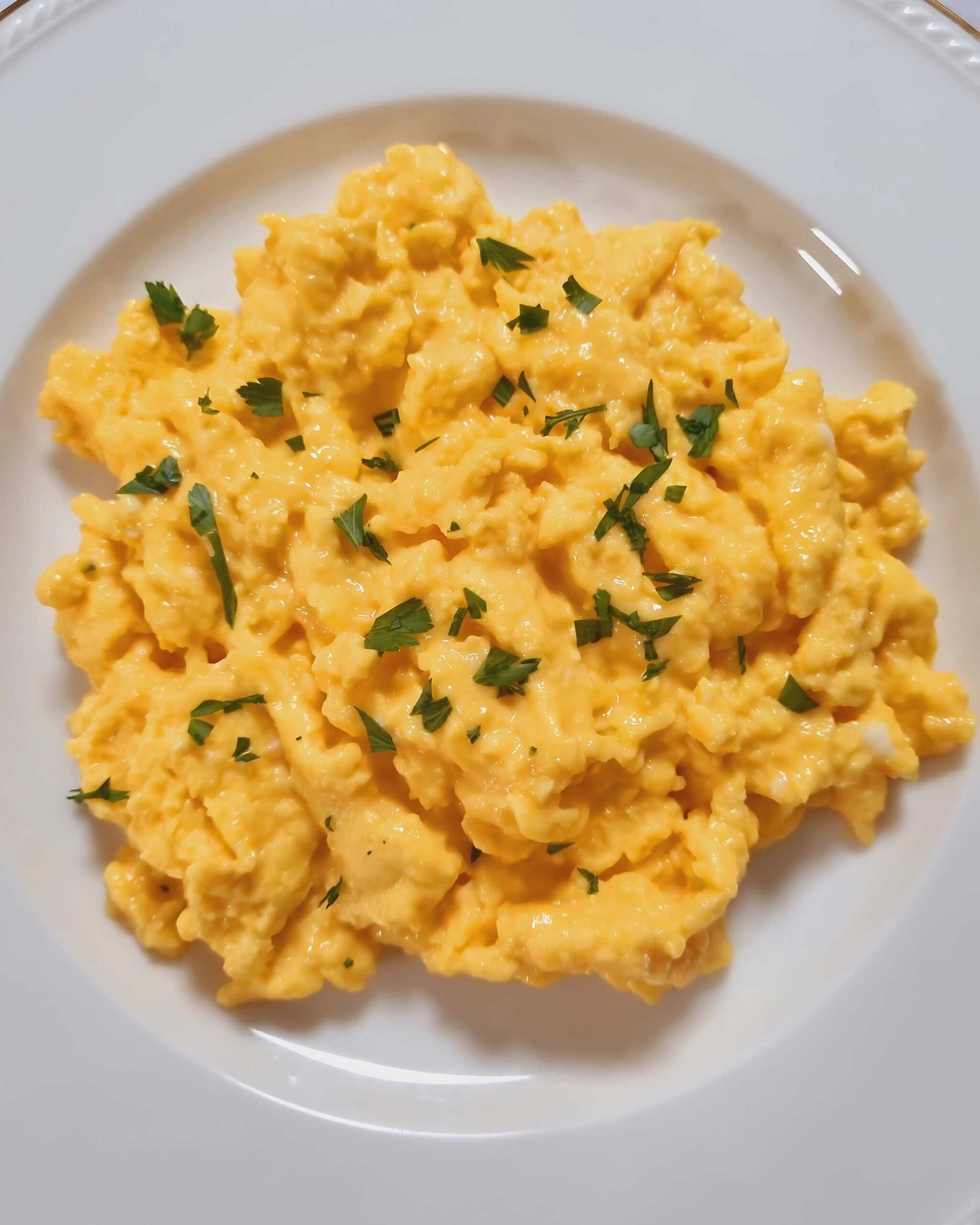
Newsletter Subscribe
Enter your email address below and subscribe to our newsletter

Enter your email address below and subscribe to our newsletter
Scrambled eggs are one of the world’s easiest and most convenient breakfasts. All you need are a few basic ingredients. Scrambled eggs are quick to whip up, and it’s perfect when paired with toasted white bread coated in butter. A little bit of ketchup and you’ve got a delicious breakfast.
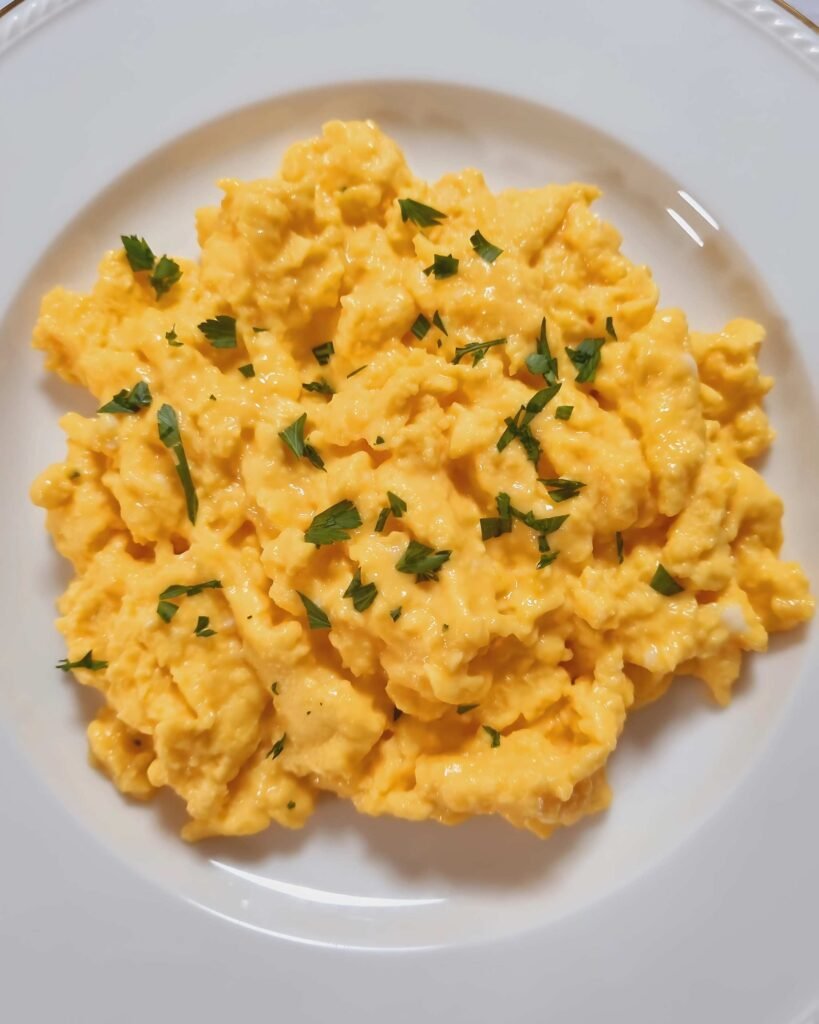
I’m an expert in making scrambled eggs, and I’ve been making them for a long time. Surprisingly, many people are unaware of how to make perfect scrambled eggs. That’s why you are here! 😉 So, what are perfect scrambled eggs? They’re not overcooked and light and fluffy in the right way. The butter provides the proper fat ratio, which provides an incredible flavour.
There are three essential elements to creating perfectly cooked scrambled eggs. The elements are adding milk, whisking eggs, and cooking at low temperatures. Using milk in scrambled eggs adds a delectable creamy taste; it helps to loosen up the density of the protein; this ensures that when the eggs are whisked, it is aerated and emulsified at the same time. When you cook eggs at a low temperature, it helps create a smooth, curd-like soft texture.
We’ve all seen overcooked scrambled eggs; they are usually dry, dull-looking, and rubbery in texture. Now, I’m sure you’re wondering, should you use cooking oil or butter to cook scrambled eggs? The choice is up to you. However, you must use adequate cooking oil/butter to cook the egg. Using too little, you will risk the eggs cooking faster than expected and possibly sticking on the pan’s surface, even if using a non-stick pan. Butter or cooking oil adds a layer of protection for the uncooked eggs.
If you’re dealing with a stove that fluctuates in temperature, follow this technique of cooking on low heat and then moving to a stove-plate with no heat. This will ensure that the eggs don’t overcook.
Fresh eggs, Butter, Milk, Salt.
Using fresh eggs is key to creating a delicious plate of scrambled eggs. Butter and helps to add a creamy and delicious taste to the eggs. A minimal amount of salt is required. Scrambled eggs should be slightly under-salted.
Remove the eggs from the fridge and set it aside for five to ten minutes. Allow it to come to room temperature. Once it has reached the right temperature, crack the eggs into a bowl. Add the milk and a light sprinkle of salt. Whisk for three minutes until tiny bubbles form on the surface.
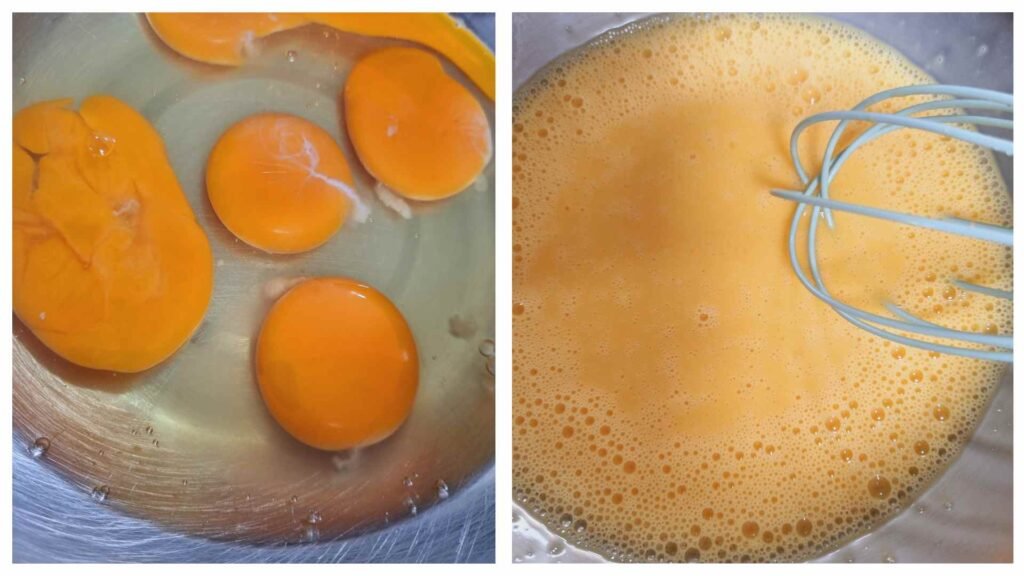
Switch the stove on, and set the temperature to medium-low temperature. If you’re dealing with a stove that takes long to heat up, you can set the temperature to medium-high temperature and then reduce the temperature after the pan has heated up.
Add a generous amount of butter or cooking oil to the pan. Add the eggs. Use a spatula that will help to move the egg mixture around easily. We highly recommend a silicon spatula for best results. It will take approximately one and half to two minutes for the eggs to begin to show any signs that it is cooking.
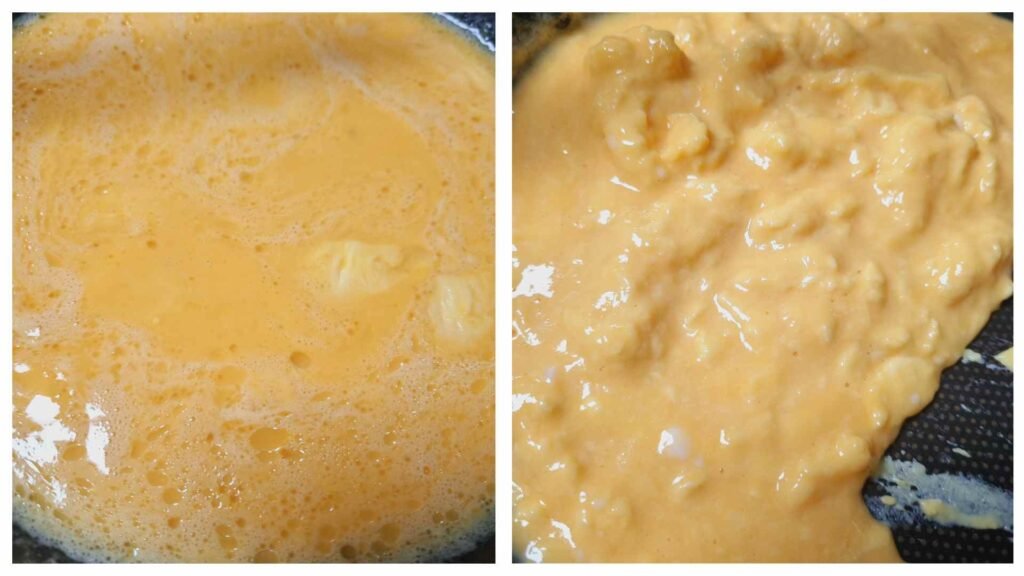
Start rounding up the eggs in a circular mixture once you start to see these little pockets of curd form on the surface. At this point, it is important to rapidly move the eggs around the pan to ensure success and prevent it from sticking. You will notice that the eggs start to form into soft-aerated clumps. When it is slightly undercooked and appears wet in texture, remove the pan of the heat.
Remove it off the pan and onto a plate. The eggs will use the balance of the retained heat and steam to cook without causing the mixture to dry out.
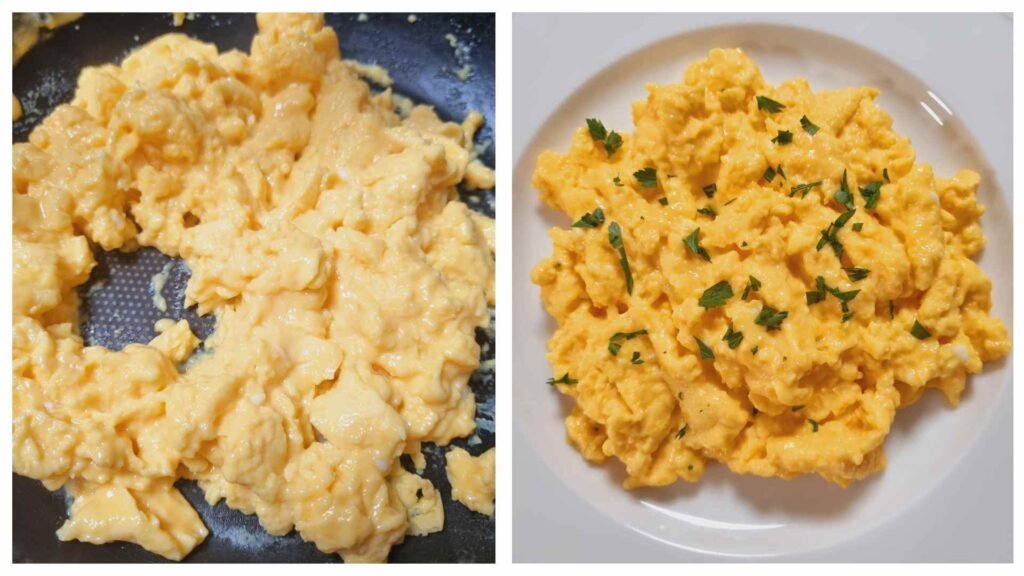
That’s it! Your scrambled eggs are done. Garnish with parsley and enjoy with freshly buttered toast and ketchup.
There are so many side dishes that pair with this dish. You can use scrambled eggs in Asian fried rice with Korean Gochuchang, veggies, and sesame seed oil. Consider Roasted Baby Tomatoes, Grilled Asparagus, or Garlic Bread for a more western approach. Scrambled eggs are also delicious in a sandwich with butter and ketchup. And if you like that cheesy flavour, consider sprinkling some parmesan cheese or grana padano.
Use fresh eggs; this will ensure that the scrambled eggs’ flavour and texture are delicious. Organic and free-range eggs are recommended. The eggs must be at room temperature. Whisk the eggs vigorously until the mixture has air bubbles. This will incorporate air into it and create fluffy scrambled eggs. Use low heat and a slow-cooking method to ensure that eggs are cooked evenly; this will prevent the eggs from becoming rubbery. Patience is key; eggs can take four minutes at medium-low temperatures to reach the right texture.
Use a non-stick skillet; this is ideal for scrambling eggs, and it will prevent sticking to the pan. A well-seasoned cast iron skillet will also work well. Fat through butter or cooking oil is necessary as it will create flavor and result in soft, curd-like textures. A rubber spatula is helpful to stir the eggs. Folding the eggs softly will create a light texture. Remove the eggs from the stove when they are slightly undercooked. The scrambled eggs will look wet in appearance.
